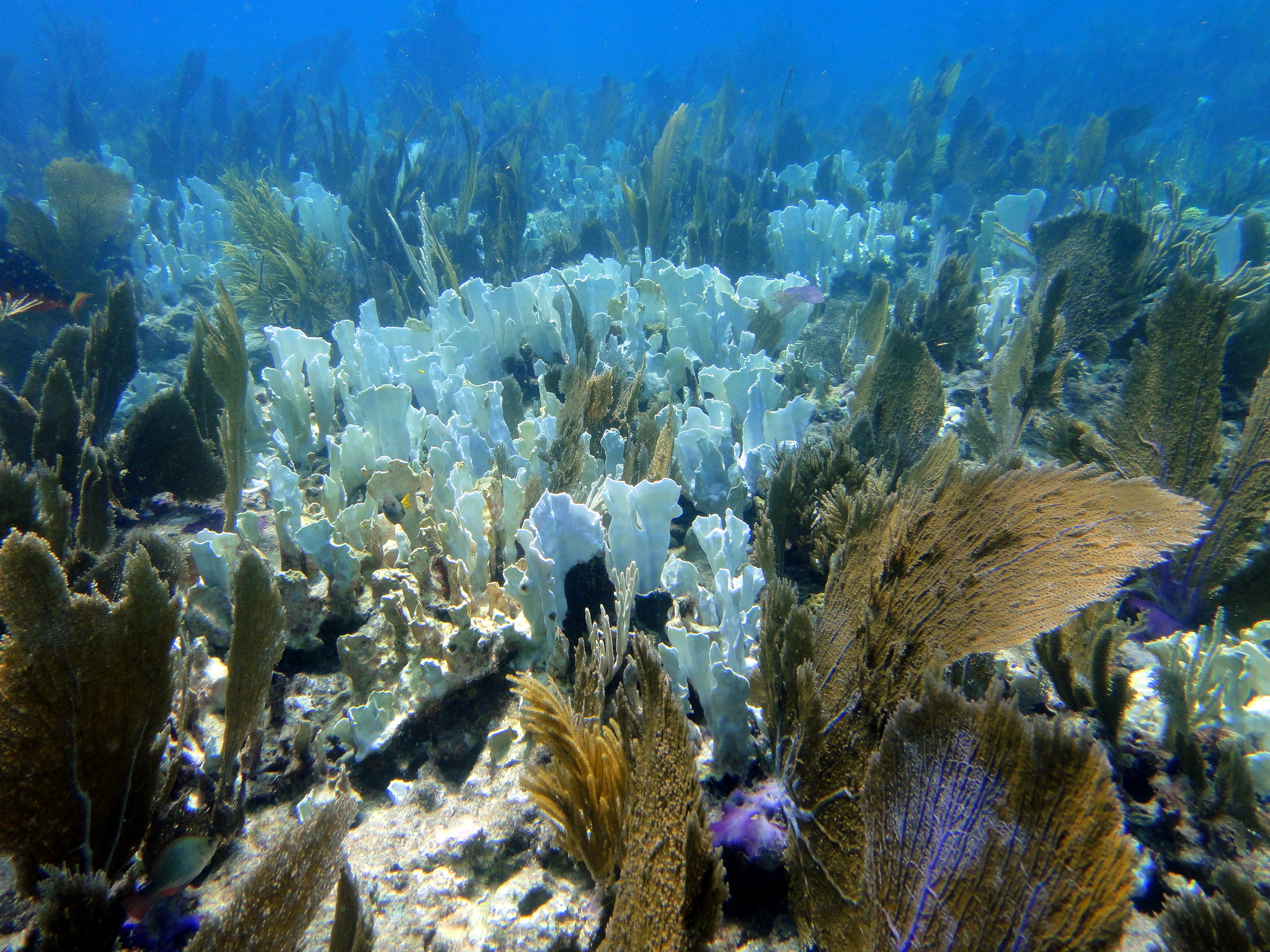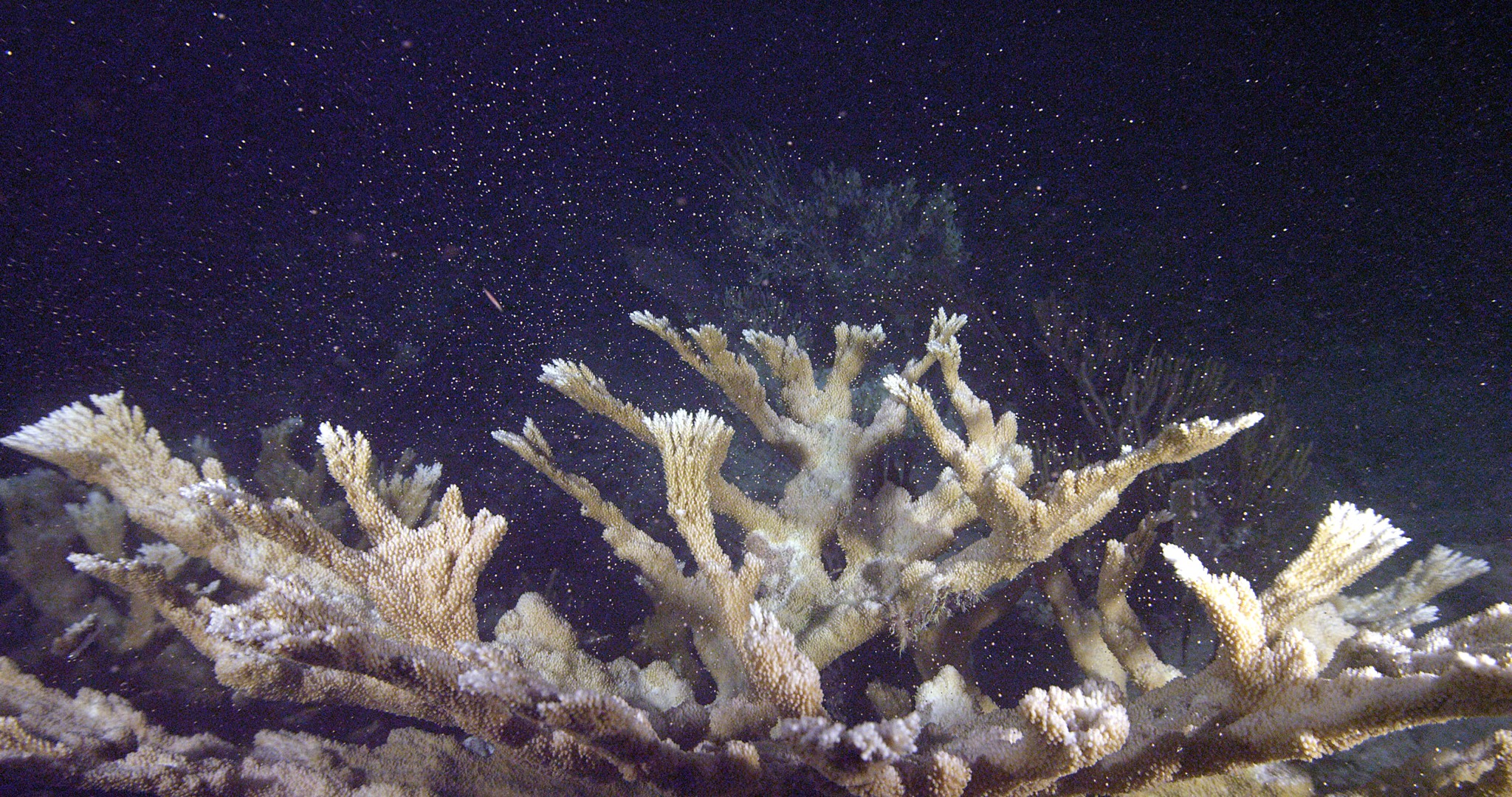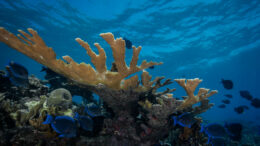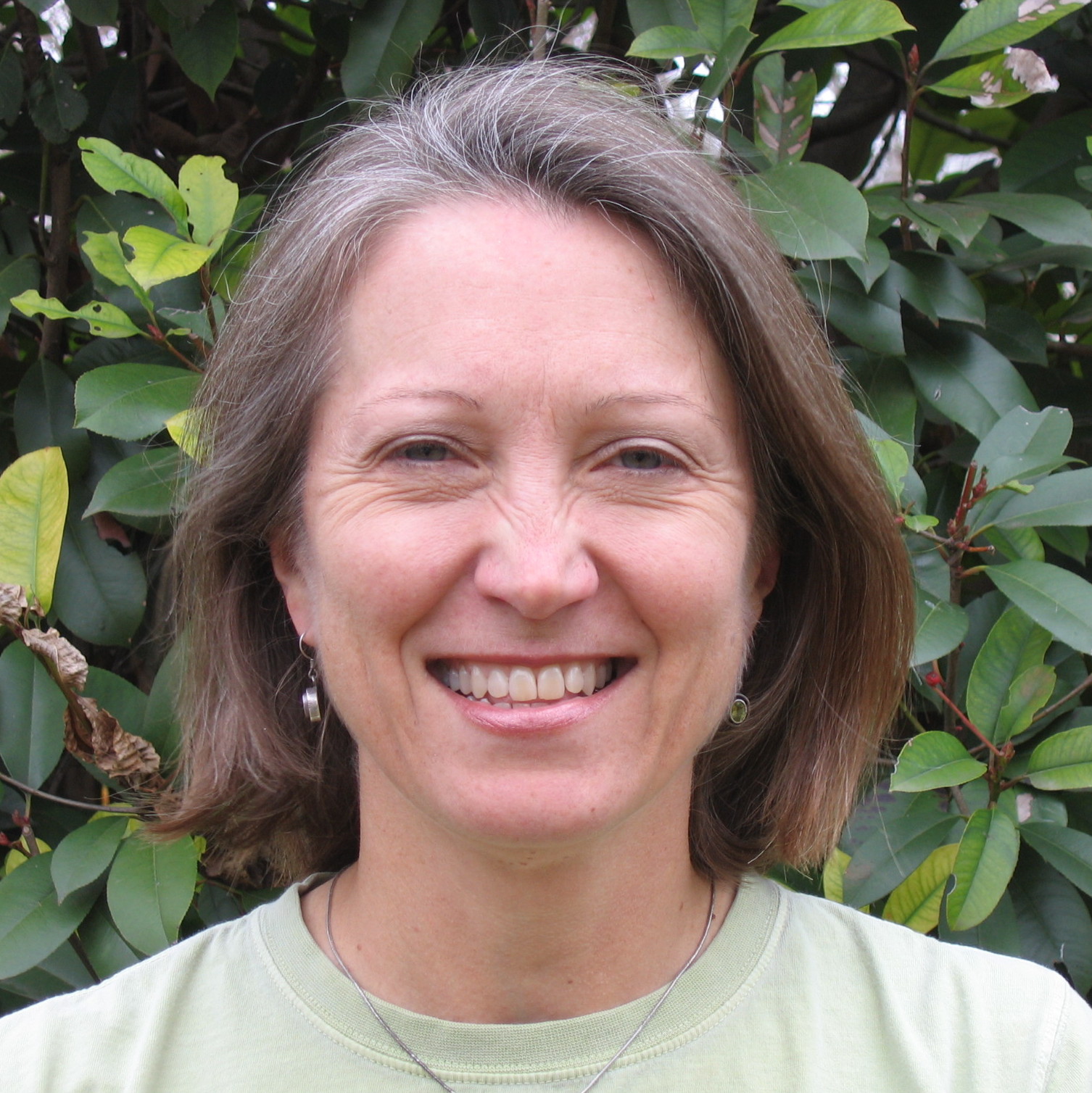Coral reefs support vibrant marine ecosystems, stimulate tourism and fishing industries, and protect shorelines from tropical storms and erosion. But reefs around the globe have been hit hard by pollution, overfishing and climate change, which is causing increasingly frequent and severe coral bleaching. Scientists predict severe bleaching on 99% of the world’s reefs within this century unless we reduce greenhouse gas emissions. Saving coral reefs requires major systemic changes — dramatic cuts in energy consumption, switching to renewable energy, managing overfishing and pollution, and restoring target reefs.
Restoration efforts have now become a priority for many scientists. This series looks at some of those efforts.
The computer screen shows a map of the Florida Keys, but instead of the traditional blue, the water appears as a blend of bright colors outlining this string of islands. The screen belongs to University of Texas professor Mikhail “Misha” Matz, who explains that the palette represents the latest research in support of saving coral reefs: seascape genomics.
The term refers to the ways conditions in the ocean environment shape the genetic variation of the organisms living there.
“We ask corals what makes their life difficult by looking at what the environment is doing and the genetic similarities in corals sampled across the seascape,” explains Matz. “That shows us the parameters that drive the corals’ adaptation.”
Reefs are made up of different species of hard corals, such as domed brain corals and branching elkhorn. Each reef contains thousands of individual organisms called polyps living inside hard external skeletons. Research shows that individuals from the same species have varying degrees of resilience, heat-tolerance, reproductive viability and other characteristics. The colors on Matz’s map correspond to these adaptations: A coral from an area of one color should thrive in any area of the same color, but not in areas of other colors.
Reefs in the Keys and throughout the Caribbean are highly degraded, with coral cover down 80% on average in the past several decades. Experts say restoration is essential to stave off extinction of coral species until — or if — the ocean once again becomes hospitable to them. But it’s expensive and labor-intensive and can, as previously noted by The Revelator, expose new corals to the same stressors that damaged a reef in the first place.
That is what drives researchers to find ways to identify the hardiest corals, the right locations from which to take them, and the best places to transplant them. Seascape genomics could be one of those ways.
Choosing Which Corals to Move Where
Scientists at dozens of labs around the world are collaborating on this type of work through the Restoration Genetics Working Group under the aegis of the Coral Restoration Consortium. Matz, a member of the group, operates the Matz Lab on the UT campus in Austin, more than 200 miles from the nearest coast. Its research focuses on how reef-building corals adapt to different environments and respond to climate change at the genomic level.
To create the Florida maps, Matz and a handful of graduate and undergraduate students sampled corals at more than 60 sites, then sequenced their DNA. The environmental data, which goes back to 1995, came from the Southeast Environmental Research Center Water Quality Monitoring Network at Florida International University. Those data include surface salinity, temperature, dissolved oxygen, turbidity, total organic nitrogen, how much light penetrates the water column, and dozens of other parameters. Henry Briceño, a professor at FIU who runs the network, says his team goes out quarterly to collect samples and take measurements at 112 stations throughout the Keys.

Matz has put the combined datasets to good use. “We have mapped adaptation and can use that if you want to move corals around and predict where they will survive,” he says. “Get a matrix of genotypes and a matrix of the seascape and find the best alignment and you get magical things. You can predict adaptation over whole seascapes, even where you didn’t sample corals.”
To Matz, the most interesting thing about seascape genomics is what it says about the conditions that corals are facing. But several studies also support it as a viable management strategy. For example, in 2020 researchers identified reefs potentially adapted for heat stress in the northwestern Pacific and revealed how they disperse to neighboring reefs, creating a metric that could be used to prioritize reefs for restoration or protection in that region.
The Caribbean has seen significant restoration activity over the past few decades. Here, a Coral Restoration Genetics Working Group paper concluded that corals raised in nurseries and then secured onto reef habitat in the ocean — a process known as outplanting — should come from genetically unique colonies both locally and at a distance.
Traditionally, restoration for any organism has favored sourcing only from local areas. But the working group suggests that needs to change for corals.
One possible approach is assisted gene flow or assisted migration — deliberately moving entire organisms, larvae or genes (through breeding) from one area to another. Migration happens naturally and allows adaptation in one population to improve the fitness of others. Assisted gene flow speeds up the process; it can be particularly important where corals are not dense enough or genetically diverse enough to support successful sexual reproduction, or in scenarios of rapid environmental change.

Those conditions pretty much describe the Caribbean, where a major problem is long-term recruitment failure by the two major reef-building species, elkhorn coral (Acropora palmata) and mountainous star coral (Orbicella faveolata). Recruitment failure means that larvae created by sexual reproduction, which travel on ocean currents for up to two weeks before settling on existing reef structure as polyps, are not settling and growing into adults.
“If we don’t fix the recruitment problem, these corals will go extinct and no amount of restoration will change that,” Matz says. “Some people are hoping conditions will fix themselves, but I’m skeptical. I think these two species are functionally extinct.”
Matz has a controversial solution: Bring in non-native corals.
Going the Distance
“We need to import other species from other geographic areas,” he says. “That idea is not popular, but the situation is drastic.”
He doesn’t mean corals from just a few miles away.
“I think we need to rewild the Caribbean with corals from the Pacific Ocean,” Matz says. “A controlled invasion.”
Pacific corals “live fast and die young,” he explains, which means they can recover more quickly from adverse environmental events than slower-growing, longer-lived corals. If it works, it could give local fish and other species that depend on reefs their own opportunities to recover.
Current recommendations apply assisted gene flow only to native species — and even that is a tough sell to many in the Caribbean region and Florida.
“I think the idea of introducing non-native species, at least at this point, is a ‘bridge too far’ for almost everyone,” says Margaret Miller of SECORE International, a nonprofit that is producing corals via sexual reproduction for outplanting and researching strategies for improving the process. “If we reach extinction or virtual extinction for many Caribbean corals, I think this is an approach that might be truly a last-ditch effort to maintain coral reef function there. Obviously, we are working pretty hard to avoid this scenario.”
Matz readily acknowledges that the conventional wisdom says to keep things where they are and that translocation is bad. “That is true when things are good,” he says. “But when they are bad, we must let or even make things move.”
Things are bad enough that we need to start thinking about that possibility right now, he says. “It could have some unintended consequences, so we need to do some basic, safe research first and not just jump in. We need to at least allow some research on it.” He notes that so far, authorities at NOAA have strenuously objected to his inquiries about permits to conduct such research.
One of the concerns is the potential spread of disease, but Matz says the Caribbean “is riddled with disease already.” Reef-building corals reproduce both sexually and asexually, and translocating larvae or gametes rather than adult fragments likely would minimize that risk, according to the working group paper. Research could further refine these methods.
Everything Everywhere All At Once
Existing research has paved the way for other actions.
“We have proven there is a genetic basis for heat tolerance in corals and that selection based on this variation can produce higher heat tolerance,” Matz says. “Corals do exchange variants over long distance — that’s validated by patterns of ocean currents, which carry coral larvae. If heat is the only problem corals face, it looks like there is enough resilience to keep some alive for a while.” His research suggests that “a while” could be at least 100 years.
The Restoration Genetics Working Group paper provides specific guidelines for restoration practitioners. The group also is seeking funding to develop a tool to sequence coral DNA in the field rather than having to take samples back to a lab. That would help local restoration experts quickly identify, and move, the best corals.
And Matz’s seascape genomics maps of the Keys are set to move from his computer screen to a scientific journal soon, providing another tool to guide restoration.
“In a perfect world, we would not be doing research simultaneously with restoration, but time is short,” says Miller, who also is a co-author on the working group paper. “Restoration investment is not going to matter unless we can get the real world back to a healthy, happy home for corals. That is going to take a whole host of actions that need to proceed in parallel.”
Bottom line, scientists — and the rest of us — may need to start thinking about even more extreme measures to save these vital habitats.
Get more from The Revelator. Subscribe to our newsletter, or follow us on Facebook and Twitter.
![]()


